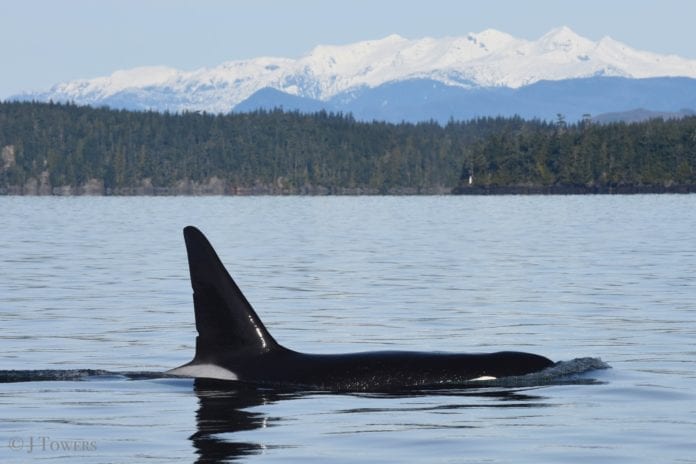The Canadian government has introduced new environmental protection policies to safeguard BC’s 75 remaining Southern Resident Killer Whales.
The four upgraded policies were announced by Fisheries and Oceans Canada (DFO) on Friday and include reducing noise from marine vessels, increasing prey in popular foraging areas, protecting key foraging and sanctuary areas, and reducing man-made contaminants that spill into the ocean.
See also:
- Orca whales accompany low tide into Victoria’s Inner Harbour (PHOTOS/VIDEOS)
- Federal government spending $61.5 million to help protect endangered local orcas
“…Southern Resident killer whales are at risk,” reads the DFO news release. “The population is small and declining, with only 75 individuals, and they are exposed to a number of serious threats.”
“The Government of Canada has formally recognized that these whales face imminent threats to survival and recovery – and we understand that saving these iconic mammals requires comprehensive and immediate action.”
The four enhanced measures, which are already in affect or will be introduced this summer, are as follows:
Reducing noise from Marine Shipping
Starting June 1st, new restrictions will be introduced to both commercial and recreational vessels. Commercial vehicles will have to reduce their speed over a longer distance between Vancouver Island and Vancouver in Haro Strait and Boundary Pass.
Additionally, commercial vessels near Victoria will have to maintain a lower speed while moving from the shore into the Strait of Juan de Fuca.
Meanwhile, general vessels, including recreational boats and whale watching vehicles, will have to stay further away from orcas starting June 1st. These private vessels will have to stay at least 400 metres away from any killer whale, except for commercial whale watching companies that have authorization from the federal Minister of Transport.
Vehicles within 400 metres will have to turn off their echo sounders and turn their engines to neutral idle to reduce noise pollution.
All marine vehicles are also required to reduce their speed to under 7 knots if they are within 1 kilometre of orcas, within certain areas.
Prey
The DFO has already begun increasing Chinook salmon populations in select foraging areas and are continuing a “voluntary bubble” policy that asks fisheries to stay away from key orca feeding areas.
To increase prey for killer whales, the DFO will release an additional 1 million juvenile Chinook salmon from the Chilliwack Hatchery every year for five years.
Interim Sanctuary Zones
New seasonal sanctuary zones are being added to BC’s waters to protect key foraging areas. Between June 1st and October 31st, no vessel traffic is allowed in zones near Pender Island, Saturna Island, and Swiftsure Bank.
Contaminants
To help ensure that Southern Resident Killer Whales have access to clean water, the DFO is enforcing stricter regulatory control to five human-made pollutants that can linger in the ocean. They are also completely prohibiting two types of toxic flame retardants.
“We are committed to working thoughtfully and collaboratively to address the decline and to promote the recovery of the Southern Resident killer whale population,” said Jonathan Wilkinson, Minister of Fisheries, Oceans and the Canadian Coast Guard, in a release.
“The measures announced today reflect the commitment to recover the whales in a manner that takes in account important economic factors and collaboration with First Nations and coastal communities.”
Along with @Transport_gc, we announced measures that will help protect and recover the Southern Resident #KillerWhales by addressing the three key threats to their survival: lack of food, noise and physical disturbance and contaminants. https://t.co/d2ushWrpyt pic.twitter.com/cZtgc34Sn1
— Fisheries and Oceans (@FishOceansCAN) May 10, 2019


